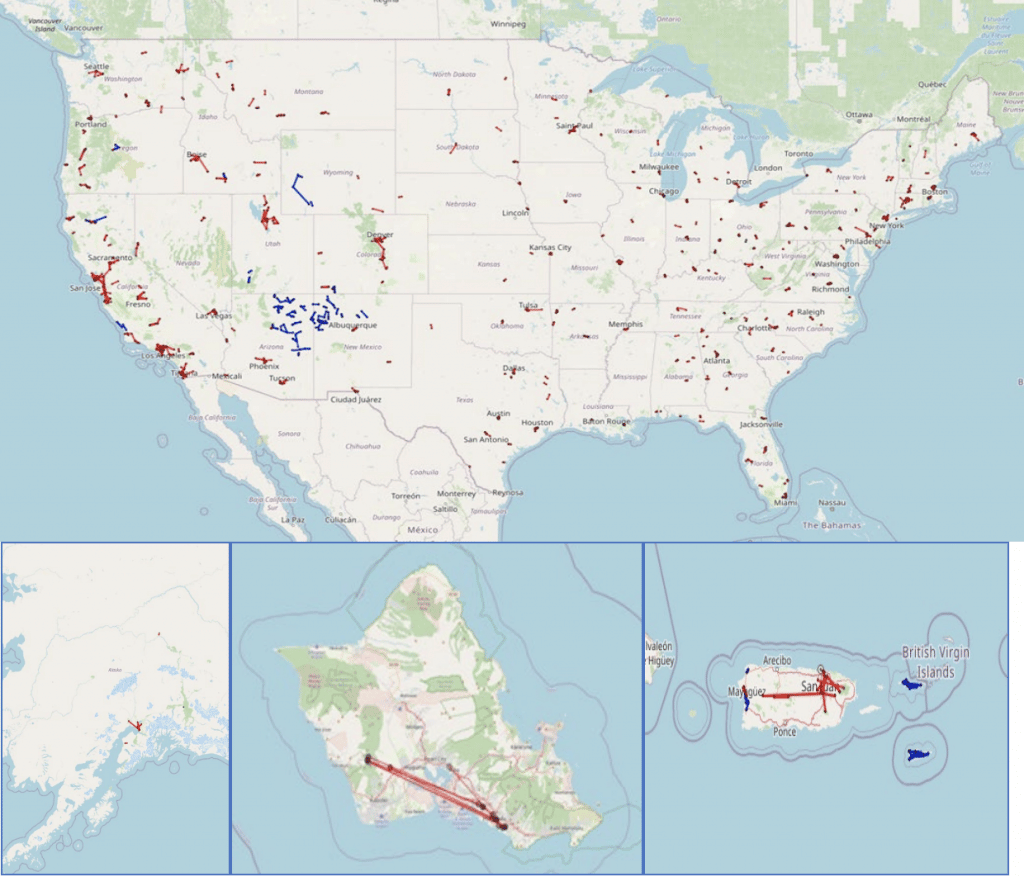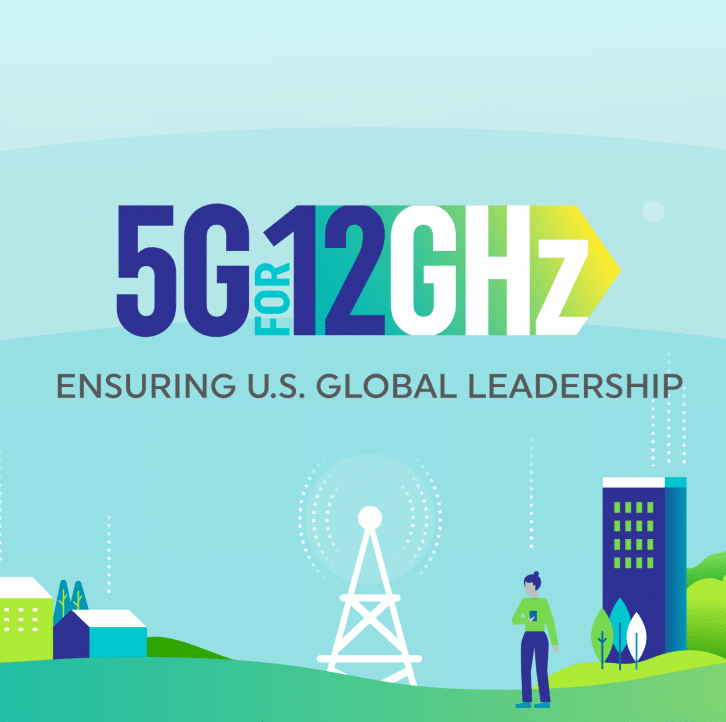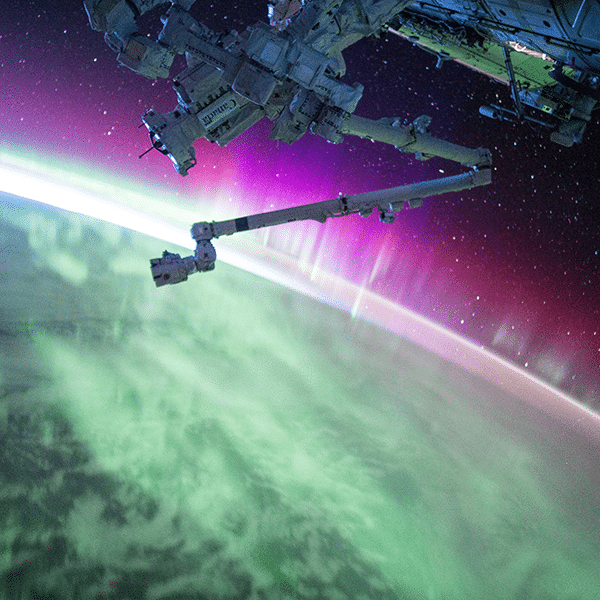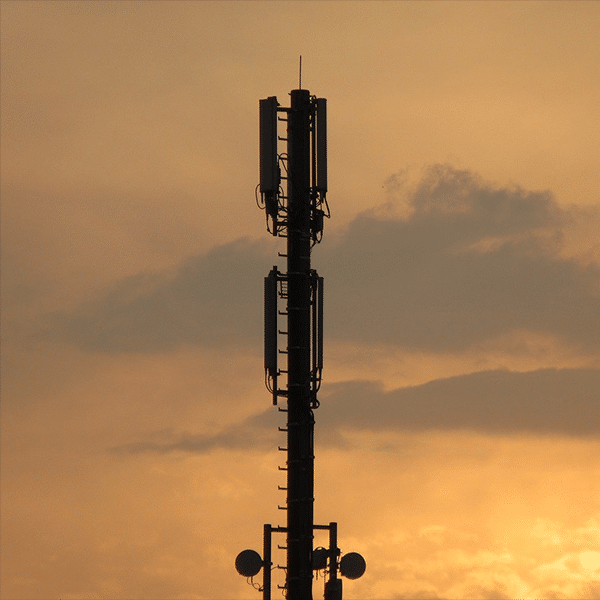As the FCC gets set to explore the possibility of making spectrum between 12.7-13.25 GHz available for mobile broadband or other uses, a group of stakeholders known as the 5G for 12 GHz coalition continues to press the commission to open spectrum in an adjacent band for mobile broadband.
The adjacent band, which includes 500 MHz of spectrum between 12.2-12.7 GHz, is currently restricted to one-way communications and is licensed to RS Access, to Dish, which uses it for satellite television and to others. Dish, RS Access and 36 other stakeholders have banded together in the 5G for 12 GHz advocacy group, and at a media event this week, key coalition members again made their case for allowing two-way communications in the band.
Dish is building a nationwide 5G network and wants to repurpose its 12 GHz spectrum to support 5G. Some other incumbent users of the 12 GHz band oppose that move. The most vocal of these is SpaceX, which uses the band – along with other bands – to support the low earth orbit (LEO) satellite broadband network that the company is deploying.
SpaceX argues that the proposed rule change would cause harmful interference to its Starlink service. Coalition members dispute that claim, arguing that a SpaceX study exaggerates the potential for interference.
The Coalition’s Arguments
Key points from this week’s 5G for 12 GHz coalition event:
- According to Jeff Blum, Dish executive vice president of external and legislative affairs, Starlink got its spectrum for free, while Dish paid for its spectrum in a 2005 auction. The 12 GHz band is a small portion of the 15,000 MHz of spectrum that Dish has available for its satellite service, he said.
- Some stakeholders, including AT&T, argue that if spectrum in the 12 GHz band is made available for two-way use, it should be re-auctioned. But Blum argued that allowing existing license holders to repurpose the spectrum would enable 5G to be deployed in the band more quickly. He also cited two previous examples where the FCC made a rule change that enabled existing license holders to repurpose spectrum without a re-auction, including Verizon’s ability to repurpose spectrum in the 28 GHz band, initially intended to support a downstream video service, to instead support 5G.
- Harold Feld, senior vice president for coalition member and consumer group Public Knowledge, argued that as vacant spectrum is increasingly difficult to find, public policy needs to shift toward finding more creative ways of enabling spectrum sharing. He noted, for example, that concerns raised about repurposing the 12 GHz band might be addressed by requiring lower-power use in certain situations – an approach that is already being used in the 6 GHz band. Feld also argued that it would not be inappropriate to require incumbents to adjust their operations to accommodate spectrum sharing.
- One question from the media focused on the need for more laboratory testing about the possibility of coexistence with incumbent users. To date, most calculations have been theoretical. In response, Feld said, “The FCC needs to offer boundaries of what it’s likely to do” so that stakeholders can establish test parameters. Those boundaries might come in the form of a notice of proposed rulemaking, for example.
The 12.7-13.25 GHz Band
The notice of inquiry about the adjacent 12.7-13.25 GHz band that the FCC will vote on later this month would be an early step in the possible repurposing of spectrum in the band. The band is currently used by satellite operators, as well as for television translator relay stations, for television pickup stations and for cable television relay service pickup stations.
In addition, NASA operates a receive-only earth station in the band and the National Science Foundation uses the band for astronomical interferometry and as a calibration aid.
The NOI includes several maps showing the location of incumbent operations, such as this one, which shows the locations of broadcast auxiliary service (BAS) links in red and common carrier/ operational fixed service (OFS) links in blue.



